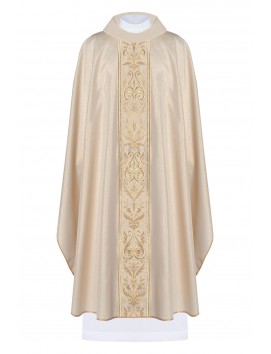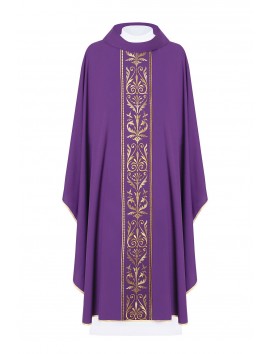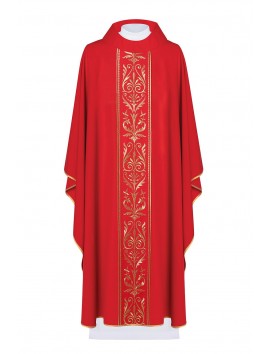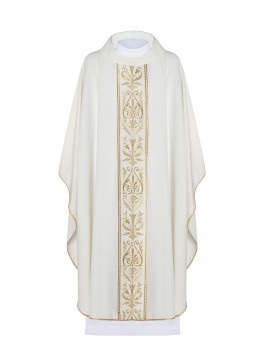Rose vestments are a type of liturgical vestment used in the Catholic Church during the seasons of Advent and Lent. They are worn by priests on the third Sunday of Advent (Gaudete Sunday) and the fourth Sunday of Lent (Laetare Sunday). The rose color symbolizes joy and hope in the midst of the penitential seasons of Advent and Lent.
.jpg)
Is it pink or rose vestments?
Although the color of the vestments may appear to some people to be pink, the official liturgical color for rose vestments in the Catholic Church is actually rose, which is described as a shade of reddish-orange. This color differs from the lighter shade of pink commonly associated with the color rose. The use of rose vestments is a traditional practice in the Catholic Church and is meant to signify a shift toward joy as the season of Advent or Lent approaches its midpoint.
What does a pink chasuble mean?
In the Catholic Church, a pink chasuble is often used on the third Sunday of Advent, known as Gaudete Sunday. The color pink is a lighter shade of rose and is used on this particular Sunday to symbolize joy and rejoicing as the faithful prepare for the coming of Christ. The word "gaudete" itself means "rejoice" in Latin, and Gaudete Sunday represents a shift in the liturgical season of Advent from a focus on penance and preparation to an emphasis on joyful anticipation of the birth of Jesus. Thus, a pink chasuble would be worn by the priest as a visible sign of this joyful celebration on Gaudete Sunday.
What does it mean when a priest wears pink?
When a priest wears pink vestments, usually a pink chasuble, it is a sign that the liturgical season is Advent or Lent and that he is celebrating Gaudete Sunday or Laetare Sunday.
Gaudete Sunday is celebrated on the third Sunday of Advent and signifies a shift from the solemnity of the first two weeks of Advent to a more joyful anticipation of Christmas. The word "Gaudete" means "rejoice" in Latin, and pink vestments are worn as a sign of this joy and hope.
Laetare Sunday, on the other hand, is celebrated on the fourth Sunday of Lent. The word "Laetare" also means "rejoice" in Latin, and the pink vestments are worn as a sign of the joy that comes with the promise of Easter. The pink vestments serve as a reminder that even in the midst of the penitential season of Lent, we can find hope and joy in the promise of Christ's resurrection.
What is the meaning of the rose chasuble?
The rose chasuble, also known as the pink chasuble, is worn by Catholic priests on two special occasions during the liturgical year - Gaudete Sunday and Laetare Sunday. Gaudete Sunday is the third Sunday in Advent, while Laetare Sunday is the fourth Sunday in Lent.
The rose chasuble is a lighter shade of rose or pink that symbolizes joy, hope and anticipation. It reminds the faithful that even during times of penance and preparation, there is always reason to rejoice and hope.
On Gaudete Sunday, the rose chasuble marks a turning point in the season of Advent. It is a time when the Church shifts its focus from penance to joy and rejoicing as we prepare for the coming of our Lord Jesus Christ. The word "gaudete" means "rejoice" in Latin, and the rose chasuble serves as a visible sign of this joyful celebration.
Why do priests wear rose vestments?
Priests wear rose vestments, also known as pink vestments, on two occasions during the liturgical year: Gaudete Sunday and Laetare Sunday.
Gaudete Sunday is the third Sunday of Advent and marks a shift from the solemnity of the first two weeks of Advent to a more joyful anticipation of Christmas. The word "Gaudete" means "rejoice" in Latin, and the rose vestments signify that joy and hope.
Laetare Sunday is the fourth Sunday of Lent. The word "Laetare" means "rejoice" in Latin, and the rose vestments are worn as a sign of the joy that comes with the promise of Easter.
In both cases, the rose vestments are a visual reminder to the faithful that even in the midst of times of penance and preparation, there is always reason to rejoice and hope.










